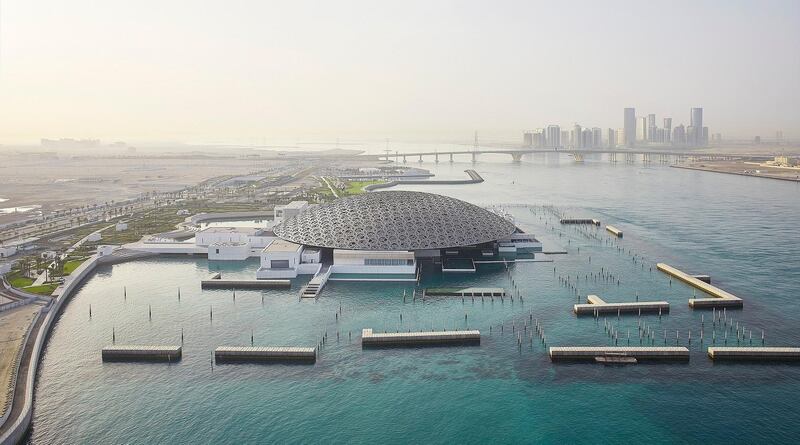It is Louvre Abu Dhabi's first birthday on Sunday. So, one year on, how has the museum done? Until now, the institution did not release its visitor figures since opening last November, making some wonder if the high numbers were just a blip.
One million visitors in a year
The numbers are now out and the museum has defied expectations: Louvre Abu Dhabi had a
one million visitors in the first year – a figure that puts it among the top 70 museums worldwide to reach that level of audience, and certainly the only one in the region.
Just as important for Manuel Rabate, the museum’s director, is where those figures are coming from. “I am not surprised, but I’m very happy with the breakdown of our visitors: 60 per cent coming from abroad and 40 per cent UAE residents, which means both Emirati and people living in the UAE,” he says.
“That is interesting because we could have been 80/20 – many major museums are only tourist magnets. We’re really balanced between our two objectives: one is to be a museum for the people here, a site of education and pleasure for residents, while also being part of the strategy for the development of the destination.”
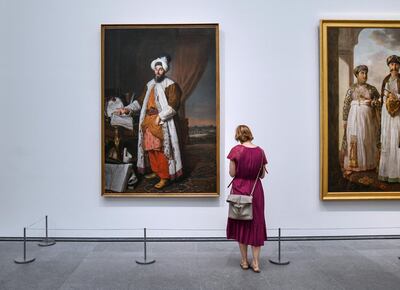
In its first year: the museum has mounted six temporary exhibitions; held regular lectures, performances, DJ sets and film screenings; welcomed 1,000 school visits; and is on its second installation in the children’s museum.
Some works on permanent display have also changed, there are 40 new loans on show from Agence France-Museums — the umbrella body of 12 French museums with which it partners — and 11 new acquisitions. This is an ongoing process, as the collection rotates fairly frequently. Fragile works, such as works on paper and textiles, are on show for three months at a time, and loans from the Agence France-Museums change every one to two years.
Almost half the works are on loan
It is in the new acquisitions that we can glimpse the story of the museum to come: Louvre Abu Dhabi, even though only one year old, is thinking far ahead. Around half of the museum’s collection, of approximately 600 works, are loans from Agence France-Museums. For the 10 years that are left of the intergovernmental agreement between Abu Dhabi and France, that figure will successively drop.
“There is a decrescendo,” as Rabate puts it, “from 300, to 250, to 200.” Within that time, Louvre Abu Dhabi will prepare by purchasing new works and by expanding the geographical reach of its current loans.
“The acquisition strategy is embedded into our long-term goals,” he says, “which is having a collection that illustrates the full narrative of the museum with less help from the French museums. My job is to plan. My job is to anticipate. This is my responsibility.”
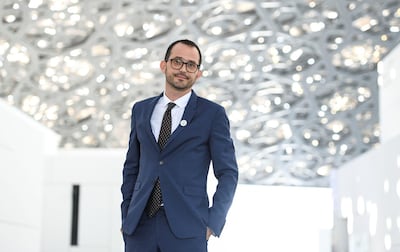
Some of the acquisitions will be from Agence France-Museums loans, such as a Phoenix-headed ewer from 8th century China.
The artefact is now in the ceramics section of the Asian Trade Routes gallery which, although one of the least star-studded sections of the museum, is my absolute favourite. There, the museum’s narrative of shared cultural influences wends its way visibly through a single set of vitrines. The ewer, with its Hellenistic decoration, supplants one that has been returned to the Musee Guimet in Paris.
The replacements are only one part of the policy, Rabate underlines. Other acquisitions are objects with what he calls the “Louvre Abu Dhabi DNA” in them, of cross-cultural influence, and others still are those that illustrate defining moments in art history.
An extraordinary sculpture of a Bodhisattva, for example, sits regally atop a plinth with one foot in a cross-legged position, the other dangling down. The new acquisition greets visitors to the Asian Trade Routes gallery. Made out of wood, it is uncannily lifelike, with the remains of colour clinging to some sections. It anchors the room, providing a stunning visual exposition of the cultural and religious connections between India and China in the 10th and 11th centuries.
“Here you see how Buddhism is coming out of India and going to China,” says Rabate. “Just as we have roads that faith travels on, we also have roads of techniques.”
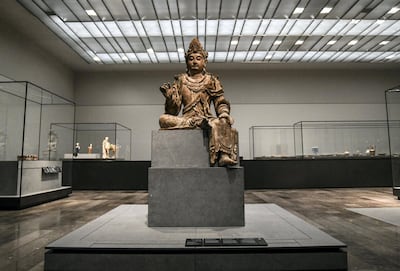
The changes to the collection also portend a moment when the French influence on the museum will wane. Passing through a room of 17th century artworks, Rabate gestures towards a subtle shift in the paintings displayed: “The Louis XIV is gone.” A portrait of Mehmed Said Pasha, an 18th century Ottoman statesman, now hangs in its place. “And the balance of the world is better,” he says.
Rehanging the modern and contemporary galleries
Louvre Abu Dhabi has also rehung its modern and contemporary galleries, which were widely perceived as the museum’s weak points. Whereas the early sections mix art and artefacts from a global range of cultures, the previous hang of the last three rooms lost the focus on artefacts, and relied heavily on European art. European work, particularly French, continues to predominate in the modern gallery.
While it is true that Paris was the locus for Modernist painting, it would still be good to see contemporaneous cultural artefacts from beyond that city. But installations have improved. The art is given more space to breathe and has been more thoughtfully grouped. An excellent installation of the famous Bohemian by Manet shows how the artist developed it from an engraving, which he effectively cut apart into different works: the famous portrait of the swarthy young gipsy's face hangs next to a separate still life of onions and garlic (both part of the Louvre Abu Dhabi collection), which the gipsy is seen selling in the original engraving.
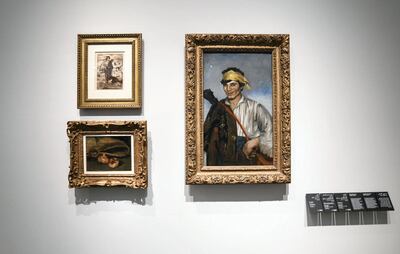
The post-war and contemporary rooms likewise feel fresher, with some key new additions. The wily French painter Picabia takes pride of place, and the Swiss duo Fischli and Weiss's beloved video The Way Things Go (1987), a Rube Goldberg-like sequence of events that was apparently ripped off by a Honda advertisement, will entrance new audiences.
In the final room, an utterly fantastic – and fantastical – painting by Senegalese artist Omar Ba is given greater prominence, opposite the addition of a folkloric painting of a coffee house by the Iraqi artist Faisal Laibi Sahi. Here, the museum has to work less hard to develop its narrative; globalisation is the lifeblood of the contemporary era.
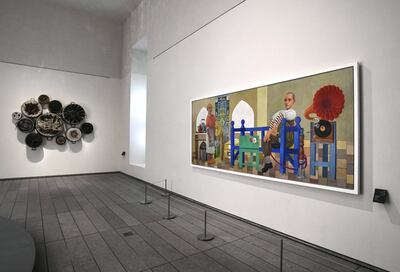
What about the Salvator Mundi?
Rabate refuses to be drawn on the metaphorical elephant in the room – or not in the room: the Salvator Mundi, which was supposed to have appeared at Louvre Abu Dhabi in September. The painting by Leonardo da Vinci, which continues to make headline news, is yet to arrive, and there is still no confirmation of when it will.
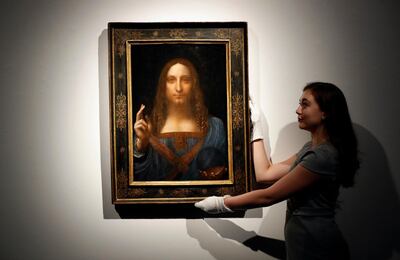
In one sense, it's not Rabate's role to clarify: the Salvator Mundi is in the collection of Abu Dhabi's Department of Culture and Tourism, not that of Louvre Abu Dhabi. I feel bad asking about it: the museum has done much more that is worthy of celebration beyond the display of one painting, however important it might be.
“We are one of the flagships of a very strong fleet,” says Rabate, when asked how the museum has changed the art landscape. “We have brought international expectations here, and we’ve given pride to the cultural community that we are working within.”
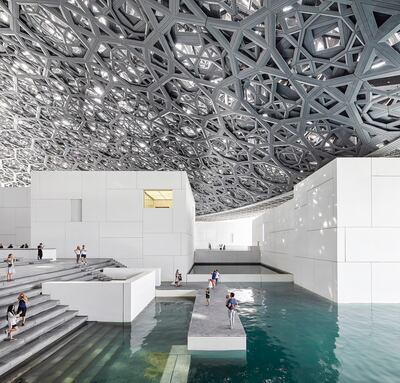
___________________
Read more:
Inside Louvre Abu Dhabi's new 'Roads of Arabia' exhibition
Why I will always remember the Louvre Abu Dhabi I saw first
Louvre Abu Dhabi: landmark museum is ready to open after ten-year journey
Louvre Abu Dhabi: the long-awaited first look inside
UAE and Saudi dignitaries tour Roads of Arabia - in pictures
___________________
